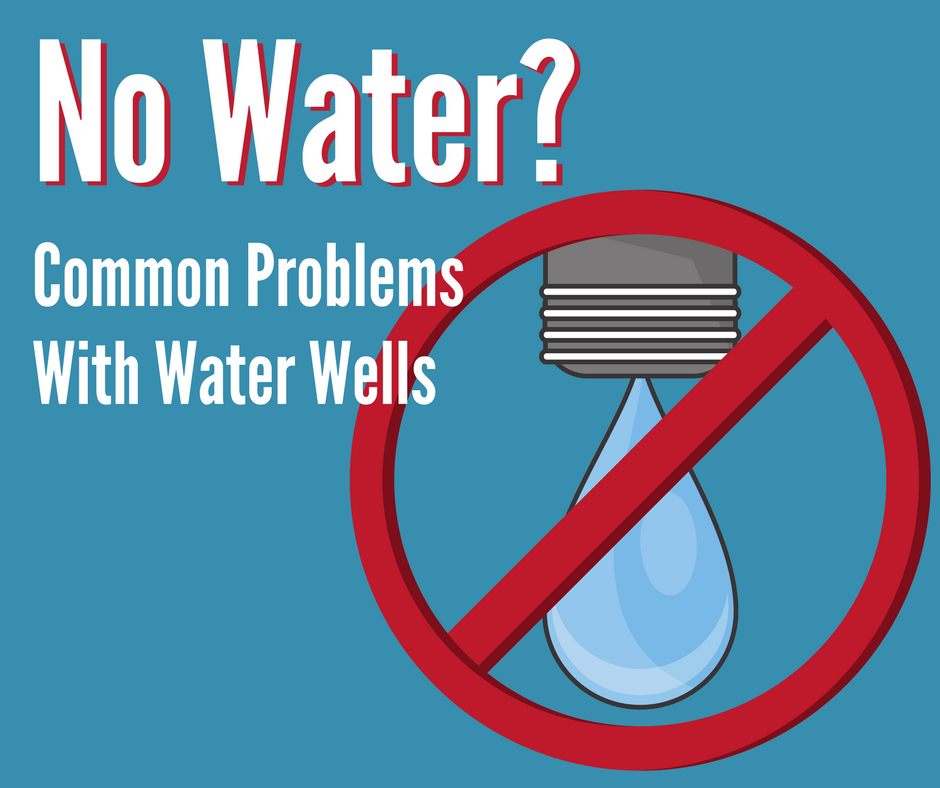What To Do If You Have No Water Coming From Your Well
Solving no water problems on a water well
Solving a "No Water" problem when on a Water Well
If you own a home with a private well, almost nothing is worse than coming home to no water. As a well owner, maintenance, water testing and treatment and "no water" issues are your responsibility. Often, a single broken component can shut down your system. Other factors like prolonged drought can lower water tables below the pumps range. That means no water for washing, bathing or cooking. Fortunately, there are some steps you can take to troubleshoot your problem, as well as solutions you can employ to get your well up and running again.
Here are some quick troubleshooting tips to try first.
Check Your Well Pump
While a submerged pump is not accessible to you, you can still check it to make sure it is functioning. Your power requires electricity to work. Always make your first stop the pump shed or circuit breaker that powers your pump. If the breaker is thrown, reset it and then try turning on the pump again. If the pump is receiving power, but still not working, you may have a pump problem. Contact one of our water professional to determine if repair or replacement is necessary. 1-800-4412-6281
Low Water Pressure
Sudden, lowered water pressure can be a warning sign that there is a significant problem ahead. The first place to look for a problem is your systems pressure tank. The gauge should read at least 40 psi. If it's lower, you may need to adjust your pressure tank. If the pressure is inconsistent throughout your house, for example, the upstairs shower isn't working well; it might make sense to install a constant pressure system. This can help to maintain even water pressure throughout your home.
Low Water Table / Insufficient Well Depth
If your home has a shallow well, even a short drought can affect your ability to draw from your well. You may need to drill deeper to restore water flow. This is a cost-effective option as opposed to re-digging a new well on your property. If you have a deep well, a process called hydrofracturing can restore water flow by opening new fractures improving flow rates by allowing more water to enter your well.
No Water: Troubleshooting Your Well Pump
While checking the pressure, and cleaning the wellhead are options, the most likely cause of no water centers around your pump. If you've recently added fixtures, for example, an irrigation system, your old pump may not be powerful enough to cover the additional water needed to operate it, along with your other fixtures. When your well was dug, the pump size was determined by the number of fixtures in your home, including water using appliances and outdoor spigots. Adding additional fixtures without addressing pump size can lower your water flow.
Another factor is the depth of your pump. To work properly, the pump must be placed appropriately in the well to reliably deliver water to your home. When it was first installed, your pump was probably set at the appropriate depth to serve your home's needs. Over time, through a number of different factors, your water level may have dropped. Often a simple repositioning of your good pump deeper into the well can restore your water flow.
The bottom line is that there are often ways your well water professional can help you to restore water flow to your home. From pump repair and replacement to hydrofracturing or installing a constant pressure system, your well water professional can help determine the cause of your problem and present you with viable solutions.
No matter what water problem you're facing, The experts at Skillings & Sons are ready to help. Our knowledge and experience can help you to diagnose the problem, and we can provide solutions to get you back to normal! We offer 24-hour emergency service for when your basement flood or your well runs dry. Just call us at 1-800-4412-6281, and we'll be there!

